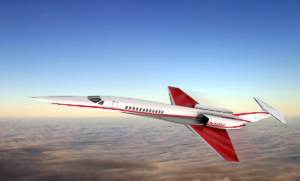…Among New Players…
With all that upheaval in one segment of business aviation, what would a year be without a set of new players promising new airframes and powerplants? In late 2003, Hondas long-rumored development of a light-light jet finally became public. This year, the company announced an engine, possibly designed to power it. Still, the company has made no announced decision to produce the airframe and no manufacturers have chosen the engine to power their creations. But Hondas long-standing interest in business aviation – if it results in new products being brought to market – could both fundamentally alter the landscape other companies are used to while bringing potential new customers to the table, especially from overseas. Given the Japanese companys keen ability to compete in various markets with innovative design and cutting-edge technology, this will be a story to watch in 2005.

 With all that upheaval in one segment of business aviation, what would a year be without a set of new players promising new airframes and powerplants? In late 2003, Hondas long-rumored development of a light-light jet finally became public. This year, the company announced an engine, possibly designed to power it. Still, the company has made no announced decision to produce the airframe and no manufacturers have chosen the engine to power their creations. But Hondas long-standing interest in business aviation - if it results in new products being brought to market - could both fundamentally alter the landscape other companies are used to while bringing potential new customers to the table, especially from overseas. Given the Japanese companys keen ability to compete in various markets with innovative design and cutting-edge technology, this will be a story to watch in 2005.
With all that upheaval in one segment of business aviation, what would a year be without a set of new players promising new airframes and powerplants? In late 2003, Hondas long-rumored development of a light-light jet finally became public. This year, the company announced an engine, possibly designed to power it. Still, the company has made no announced decision to produce the airframe and no manufacturers have chosen the engine to power their creations. But Hondas long-standing interest in business aviation - if it results in new products being brought to market - could both fundamentally alter the landscape other companies are used to while bringing potential new customers to the table, especially from overseas. Given the Japanese companys keen ability to compete in various markets with innovative design and cutting-edge technology, this will be a story to watch in 2005.
At the same time, other new companies have sprung up to either create or fill new market niches. Perhaps most exciting among them are two new players purveying supersonic business jets, or SSBJs. Aerion, a Reno, Nev.,-based company formed to reintroduce commercial supersonic flight," went to the NBAAs annual meting with a business jet design it says could enter service as soon as 2011. The company says its proposed SSBJ will have a low sonic-boom signature and will be designed to cruise at up to Mach 1.1 without a boom. Another company, Supersonic Aerospace International (SAI), told the NBAA assembly it had "successfully confirmed the design for its entry in the SSBJ sweepstakes, the Quiet Small Supersonic Transport (QSST). The QSST program is under the direction of J. Michael Paulson, son of former Gulfstream head Allen Paulson, "using funds Allen Paulson left in trust for this project." Like Aerion's effort, SAI maintains it has developed an engineering solution to the sonic-boom problem.






